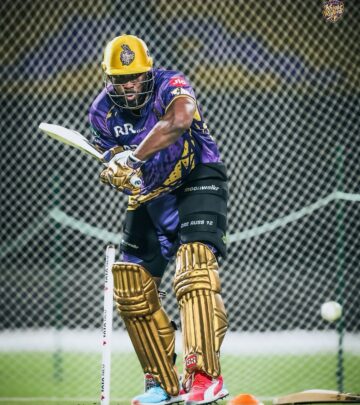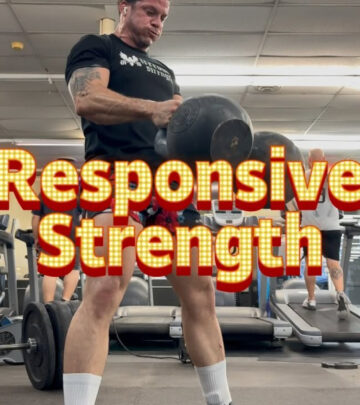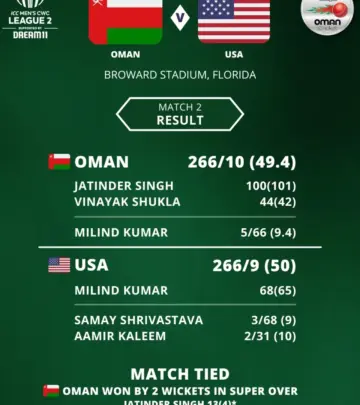Feel Vs Real: Exaggerated Movements Change The Game
Athletes push boundaries with bold moves, blending intense training techniques into art!!

Image: Instagram
Jonathan Yarwood has recently taken to Instagram to share a compelling training video that challenges conventional sports technique. In a post that has already sparked conversations among enthusiasts, Yarwood explains how athletes are using an innovative ‘feel versus real’ method to refine their movements. The idea is simple yet powerful: exaggerate the feel of a movement to adjust and perfect the real action. As Yarwood puts it, “The more ingrained your move is, the move you gotta exaggerate the feel to get it right for real.” This approach is resonating with players across various disciplines, blending art and athletic precision in unique ways.
Innovative Technique On Display
The Instagram post, which also credits a video by @justinthomas34, demonstrates great players working diligently to master their movement patterns. The video shows athletes engaging in exercises where they purposely exaggerate their swings, steps, or gestures. This hyperbolic method allows the muscle memory to reset and sharpen, highlighting a modern twist on traditional training techniques. The imagery in the post—vivid action shots of dynamic movement—captures the essence of this innovative style. The athletes appear fully immersed in the process, visually illustrating how a pronounced effort can translate into genuine performance improvements.
Yarwood’s caption immediately caught attention. Its straightforward message underscores a principle familiar not only to seasoned pros but also to aspiring athletes: sometimes you have to push your technique into overdrive in order to extract the true, precise movement. The video, which combines slow-motion segments and close-up angles, gives viewers an in-depth look at how each exaggerated motion plays a role in perfecting real-time execution. This technique is especially relevant in sports where precision and timing are everything.
A Closer Look At The Method
In the world of sports, body mechanics and movement patterns are under constant scrutiny. Traditionally, coaches have relied on repetition to ingrain proper form. However, as modern training philosophies evolve, there is a growing belief in the value of exaggeration. In Yarwood’s video, the emphasis is on feeling the movement—amplifying the motion to a level where any minor discrepancy can be identified and corrected before it becomes habitual. This method reminds spectators of similar training techniques seen in other sports arenas, particularly in golf, where players are known to exaggerate swings to curb errant habits and refine the fluidity of their shots.
Across social media, this concept of hyperbolic motion has been echoed by other sports figures. A related Instagram post from a well-regarded golf enthusiast described how maintaining functionality and adhering to a consistent swing blueprint allows players to stay competitive—even if it means looking unconventional at first. The golf community’s embrace of such methods demonstrates that the principle of exaggerating movements isn’t limited to one sport. Whether tackling a challenging putt or perfecting a powerful drive, the underlying idea is the same: intensify the feel to achieve the real effect.
Athletic Mastery Through Exaggeration
This trend isn’t just about changing techniques—it’s about redefining how athletes approach the learning curve. In a ‘crazy game’ where the rules apply universally, every movement matters. Jonathan Yarwood’s post is a reminder that sometimes, stepping outside the norm can lead to breakthroughs on the field or course. With sports adopting a more scientific approach to training, athletes are now encouraged to experiment boldly with their motions, making adjustments that might seem exaggerated but ultimately result in enhanced performance.
The video’s compelling visuals are accompanied by another layer of context provided by related posts on Instagram. One such post from a favorite golf figure highlights meticulous training routines and an unwavering commitment to technique. Another post, which described a player as being part human and part golf-cyborg, further emphasizes that modern athletes are not afraid to push boundaries in their quest for perfection. Together, these posts form a narrative of continuous improvement, personal discipline, and a willingness to explore unconventional methods in a structured environment.
As we see more athletes and coaches advocating for exaggerated movement practices, the dialogue around sports training is set to evolve. The method not only helps in breaking ingrained patterns but also encourages a deeper body awareness and control. Given that every sport demands a high degree of precision, this renewed focus on technique could very well redefine training regimens across multiple disciplines—be it on the golf course, in the gym, or on the practice field.
Yarwood’s post and the subsequent discussions indicate that the future of athletic training may lean heavily on techniques that balance the dramatic with the precise. This blend of theatrical exaggeration and literal technique is already making waves, setting a new standard for how athletes prepare for competition.
By merging cutting-edge training philosophies with timeless principles of repetition and control, players are not only adapting but thriving. This innovative approach offers both an entertaining and a practical insight into the mechanics of movement—a lesson that transcends sport and finds relevance in everyday physical mastery.
Read full bio of Vidya Tadapatri
























